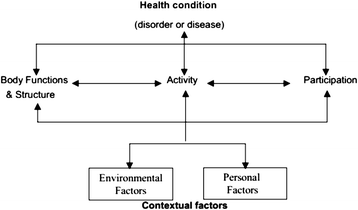The importance of disability as a health issue for mid-life women
- PMID: 30766697
- PMCID: PMC6297968
- DOI: 10.1186/s40695-015-0011-x
The importance of disability as a health issue for mid-life women
Abstract
Data suggest that disability prevalence among mid-aged populations is increasing in recent years; current prevalence estimates for mid-aged adults range from 20 to 40 %. The World Health Organization's International Classification of Functioning (ICF) has provided a multi-dimensional biopsychosocial model to understand disability that is highly relevant to mid-aged populations. Under the ICF framework, mid-aged women experience high levels of work, non-work, and mobility-associated disability but very little difficulty with self care. Despite the high prevalence, evidence suggests that there is a large proportion of non-chronic disability and that mid-aged women can both worsen and improve their functioning. Thus, the mid-life period may represent a critical window during which interventions to improve disability may be most efficacious for the improvement of current and future functioning. Interventions that are initiated during the mid-life are highly relevant as a strategy to reduce disability during this life stage and prevent or forestall the onset of late life disability. Targets for intervention include improvement of depressive symptoms and increasing physical activity levels, both of which have shown to be efficacious in older populations and are correlates of mid-life functioning and disability.
Keywords: Disability; Functional limitations; Mid-life; Middle age; Physical functioning; Women.
Figures
References
-
- World Health Organization . World Health Report 2003. Geneva: World Health Organization; 2003.
-
- Crimmins E, Saito Y. Change in the prevalence of diseases among older Americans: 1984–1994. Demogr Res. 2000;3:9. doi: 10.4054/DemRes.2000.3.9. - DOI
-
- Hootman JM, Brault MW, Helmick CG, Theis KA, Armour BS. Prevalence and most common causes of disability among adults-United States, 2005. MMWR Morb Mortal Wkly Rep. 2009;58(16):421–426. - PubMed
LinkOut - more resources
Full Text Sources
Other Literature Sources
Medical



